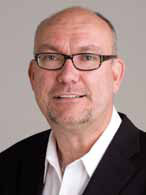It is amazing that large buildings ever even get built. Consider the amount of thoughtful coordination required by the people involved throughout the design cycle through to the onsite execution of erecting, fitting and finishing the structure. A multitude of professionals and various intricate systems are inextricably involved, more so today than ever before. Many disciplines all must merge their expert level of design and building techniques.
It is a race to the finish line, represented by the completion of the building. A series of milestones throughout the process signify the completion of different segments of the race. Substantial-completion and the first public events are two of the large milestones, when everyone involved knows the end of construction (the finish line) is well within sight. All the while, momentum and pressure increase to complete the project on time.
Even with the best of project management skills applied, construction is a never-ending battle against the unforeseen and the unexpected. Small mistakes along the way contribute to create an error tolerance stack-up that can leave highly complex systems inoperable—I am especially speaking to the nowconverged low-voltage systems including AV. The sophistication of today’s advanced AV technologies combined with network convergence creates new challenges to bringing quality systems online quickly, and must not succumb to the effects of error tolerance stack-up.
Making for an even greater complexity, the modern day construction industry (including our own, small audiovisual installation segment) is fragmented into multiple divisions and disciplines, each becoming ever more specialized. Cutting-edge AV systems of all varieties require that a specialized knowledge base and skill set be carried out at an expert level.
The increasing convergence of technologies means the typical, natural response of identifying the single reason for a fault during commissioning or routine troubleshooting needs to be reconsidered. Highly integrated systems have numerous tentacles reaching into other sub-systems, creating the capacity for a fault to be caused by any one of multiple errors. Further to this point, modifications of any one system may unintentionally affect the correct functioning of another.

Advanced networked AV systems have become a paradox. The specialist is required for the intricacies of the individual complex sub-systems—a practiced system generalist is required to be certain all networked sub-systems are functioning as intended, in harmony. This can mean the difference between fully realizing an AV system’s actual capabilities, or not.
It seems that in a blink of an eye the first-event phase of the building begins. When everything works correctly, it is magic, the arrangement and integration of the various technologies is truly transparent to the users and spectators, but additive to the experience, as it should be. The first-events phase in any new building is also when the owners and user communities form first impressions. These impressions create opinions that will last a long time and become the perceived reputation of the building and its various systems.
Building a strong link, or “bridge,” between the construction phase and first-events phase is allimportant to smoothly start a new building’s existence. The correct amount and depth of coordinated testing, plus a high level of training for the end user is crucial. Direct and meaningful dialogue with the end user operations team is vital during the period of time leading up to the first events. Legitimate questions and concerns must be addressed. The new building’s operation staff must take ownership of operating the hardware, and as importantly must be empowered to accept responsibility for the results. What may seem to be an incremental inconvenience in a minor subsystem during a hurried moment in the final stage of testing or commissioning may indeed be a traumatic problem for even an experienced operation staff during the first event.
Metaphorically speaking, the last day of construction is the finish line. But it must be remembered, that the first event is only the starting line for the new building and its operation staff. A strong bridge from the construction phase to firstevent phase will ensure a smooth start up every time. With the rapidly increasing adoption of converged technologies, this concept becomes ever more crucial to our success.
Ted Leamy (ted@promediaultrasound.com) is the COO of Pro Media / UltraSound, an audio-video installation, and tour-sound contractor.
What to Expect
An important part of building the bridge from the construction phase to the first event phase is careful handling of expectation management. All too often, problems arise when users begin to operate their audio, lighting, and video equipment. If the system’s capabilities have not been clearly outlined and discussed throughout design and implementation, trouble may lie ahead.
A notorious expectation management problem is when a user expects that a sound system should be able to do something that it actually can’t, and they end up damaging it as a result. Expectation management is an inexpensive and effective way of fixing the problem. If they can have their expectations of the system brought into line with what the system can actually do, then they are far less likely to push the system into the damage zone.
Expectation management is a component of audio and video that can really haunt you if overlooked. An enormous number of clients, end users, and people in general see a piece of gear that’s outside their sphere of experience and figure that it must be able to do magic. Disappointment in magic that doesn’t happen can be a very ugly thing.
You can derive a lot of benefit and self-respect by ensuring that expectation management is given high priority in what you do. If your own expectations are managed well, then you will likely make better decisions. If the people that you work with have expectations that are managed well, then you will likely have better working relationships. If the clients that you work for have their expectations managed well, then you will likely have much happier customers. If you’re not already working expectation management into your picture of a “total quality experience,” I think it’s worth giving it a try.
—Danny Maland











